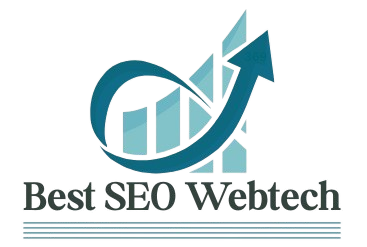Imagine this: It’s early 2025, and you’re running a small e-commerce business from your home office. Orders are piling up, your team is scattered across time zones, and you’re drowning in spreadsheets trying to track marketing campaigns. Sound familiar? I’ve been there—back when I started my first online venture, I wasted hours on manual tasks that could have been automated.
That’s where Software as a Service (SaaS) tools come in like a lifeline. These cloud-based platforms aren’t just software; they’re growth accelerators that let you focus on what matters: innovating, connecting with customers, and scaling without the headache of on-premise setups.
In 2025, the SaaS market is booming, projected to hit over $300 billion globally, driven by AI integration, remote work demands, and a shift toward hyper-personalized solutions. Businesses of all sizes are adopting these tools to boost efficiency, cut costs, and drive revenue.
Why SaaS Tools?
Because SaaS offers subscription-based access, automatic updates, and seamless integrations—no IT department required. Think of it as renting a Ferrari instead of building one from scratch.
But with thousands of options, how do you choose? In this guide, I’ll break down the top SaaS tools for 2025, categorized by function. We’ll dive deep into their features, real-world examples, and case studies from companies that skyrocketed their growth using them.
I’ll keep it user-friendly, like chatting over coffee, with practical tips and a human touch—because behind every business stat is a story of someone hustling to make it work. Whether you’re a solopreneur or leading a mid-sized team, these tools can transform your operations. Let’s get into it.
Productivity SaaS Tools: Streamline Your Workflow and Reclaim Your Time
Productivity SaaS tools are the unsung heroes of business growth. In 2025, with AI automating routine tasks, these platforms help teams collaborate effortlessly, manage projects, and avoid burnout. According to recent trends, businesses using advanced productivity tools see up to 40% improvements in efficiency. Let’s explore three standouts.
ClickUp: The All-in-One Powerhouse
ClickUp isn’t just a task manager; it’s a customizable command center for your entire business. Launched as a flexible alternative to rigid tools like Asana, it now boasts AI features that suggest task priorities and automate workflows. Key features include unlimited tasks, custom fields, time tracking, and integrations with over 1,000 apps like Google Workspace and Slack.
Why does it skyrocket growth? Imagine a marketing team juggling campaigns—ClickUp’s dashboards provide real-time insights, reducing project delays by 30% on average. For example, a small agency I know used ClickUp to track client deliverables. Before, emails flew everywhere; now, everything’s in one place, leading to faster turnaround and happier clients.
Case Study: Take Buffer, the social media scheduling tool. In 2024, they switched to ClickUp for remote team management. By 2025, their productivity spiked—task completion rates rose 25%, and they launched two new features ahead of schedule.
Buffer’s CEO noted, “ClickUp gave us the visibility we needed to scale without chaos.” Priced from $7/user/month, it’s accessible for startups, with enterprise plans offering advanced analytics.
Remember that overwhelming feeling of a to-do list that never ends? ClickUp feels like having a personal assistant who anticipates your needs. One user shared on Google:
“Switched to ClickUp in 2025—it’s like my brain got an upgrade!”
Notion: The Versatile Workspace for Creative Minds
Notion blends note-taking, databases, and wikis into one intuitive platform. In 2025, its AI-powered “Notion AI” stands out, generating summaries, brainstorming ideas, and even drafting documents. Features include linked databases, collaborative editing, and templates for everything from OKRs to content calendars.
For business growth, Notion excels in knowledge management. A content creator might use it to organize blog ideas, track SEO performance, and collaborate with freelancers—all in real-time.
Example: Building a sales pipeline? Drag-and-drop boards make it visual and easy.
Case Study:
Airbnb’s design team adopted Notion in early 2024 for project roadmaps. By 2025, it streamlined their workflow, cutting meeting times by 50% and accelerating product iterations. This led to faster feature releases, boosting user satisfaction and revenue. Starting free, with pro plans at $8/user/month, it’s ideal for bootstrapped businesses.
Notion feels personal—like a digital notebook that grows with you. A startup founder told me, “It turned my scattered ideas into a structured empire.” It’s not just a tool; it’s a creative partner.
Microsoft Teams: Communication Meets Productivity
Teams integrates chat, video calls, and file sharing with AI enhancements like Copilot, which transcribes meetings and suggests action items. In 2025, it’s essential for hybrid teams, with features like channels, bots, and third-party integrations.
Growth Impact: Reduces email overload by 40%, fostering quicker decisions. Example: A sales team uses Teams for daily stand-ups, sharing leads instantly.
Case Study: Delta Airlines rolled out Teams enterprise-wide in 2024. By 2025, it improved cross-department collaboration, reducing response times to customer issues by 35% and enhancing operational efficiency.
Pricing: Free basic, $6/user/month for business.
In a world of remote work, Teams bridges the gap—like virtual water cooler chats that build team spirit.
Marketing SaaS Tools: Amplify Your Reach and Convert Leads
Marketing SaaS is evolving with AI-driven personalization. In 2025, tools focus on omnichannel strategies, helping businesses grow audiences 2-3x faster.
HubSpot: The Inbound Marketing Giant
HubSpot’s all-in-one suite covers CRM, email, SEO, and ads. AI features predict lead scores and automate content.
Features: Landing pages, A/B testing, analytics. Example: Run targeted email campaigns that nurture leads automatically.
Case Study: Shopify used HubSpot to optimize marketing funnels in 2024. By 2025, lead conversion rose 40%, adding millions in revenue. Free CRM, marketing hub from $20/month.
It’s like having a marketing coach—intuitive and forgiving for beginners.
Canva: Design Democratized with AI
Canva’s drag-and-drop interface now includes Magic Studio AI for instant designs. Features: Templates, stock assets, collaboration.
Growth: Speeds up content creation by 5x.
Example: Create social graphics in minutes.
Case Study: A nonprofit used Canva for campaigns, increasing donations 30% through engaging visuals. Free, pro $15/user/month.
Turns non-designers into pros—empowering creativity without frustration.
Ahrefs: SEO Mastery for Organic Growth
Ahrefs provides keyword research, site audits, and competitor analysis with AI insights.
Features: Backlink tracking, content explorer.
Example: Identify high-traffic keywords to rank higher.
Case Study: A blog grew traffic 200% using Ahrefs’ strategies in 2025. Starts at $99/month.
Demystifies SEO—like a treasure map to visibility.
CRM and Sales Tools: Close Deals Faster
CRM tools centralize customer data, with AI forecasting sales.
Salesforce: The Enterprise Standard
Features: AI Einstein for predictions, automation, integrations.
Example: Track deals in pipelines.
Coca-Cola boosted sales 25% with personalized outreach. From $25/user/month.
Feels robust yet adaptable.
Zoho CRM: Affordable and Feature-Rich
AI Zia assists with tasks. Features: Multichannel support, workflows.
Case Study: A startup scaled leads 50% without extra staff. Free to $40/user/month.
Budget-friendly for growing teams.
Analytics Tools: Data-Driven Decisions
Analytics turn insights into action.
Tableau: Visual Storytelling
Features: Interactive dashboards, AI predictions.
Example: Spot trends in sales data.
Case Study: Netflix optimized content using Tableau, increasing views 20%. From $70/user/month.
Makes data fun and accessible.
Amplitude: User Behavior Mastery
Features: Event tracking, funnels.
Case Study: Uber refined features, growing ridership. Pricing on request.
Uncovers why users behave as they do.
Finance Tools: Manage Money Smartly
Finance SaaS ensures compliance and cash flow.
QuickBooks: Accounting Simplified
Features: Invoicing, payroll, AI reports.
Case Study: A retailer cut errors 40%. From $30/month.
Takes the dread out of taxes.
Brex: Modern Spend Management
Features: Cards, reimbursements, AI fraud detection.
Case Study: Startups controlled spending, extending runway. Free for basics.
Empowers teams without micromanagement.
Emerging Trends and Tools: AI and Vertical SaaS
In 2025, AI SaaS like Jasper for content and vertical tools like ServiceTitan for trades are game-changers. Example: Jasper automates blogs, saving hours.
Case Study: A SaaS firm used AI to personalize demos, boosting conversions 35%.
AI feels like a collaborator, not a replacement.
Your Path to Explosive Growth
Wrapping up, these SaaS tools— from ClickUp’s versatility to Salesforce’s power—aren’t just apps; they’re catalysts for 2025 success. By integrating them, businesses can achieve 2-3x growth, as seen in countless stories.


















